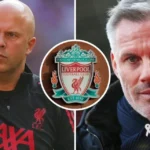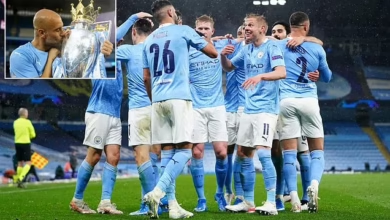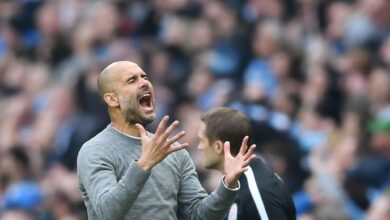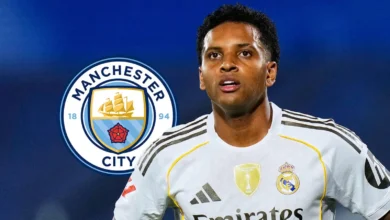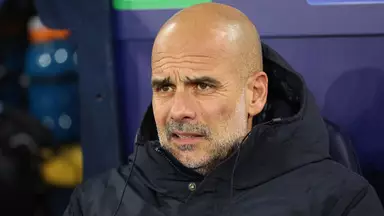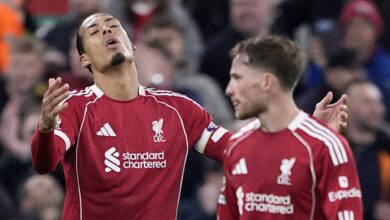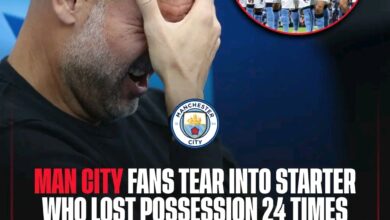Liverpool FC Injury Report: Navigating Early Season Challenges with Bradley Absence and Frimpong Concerns
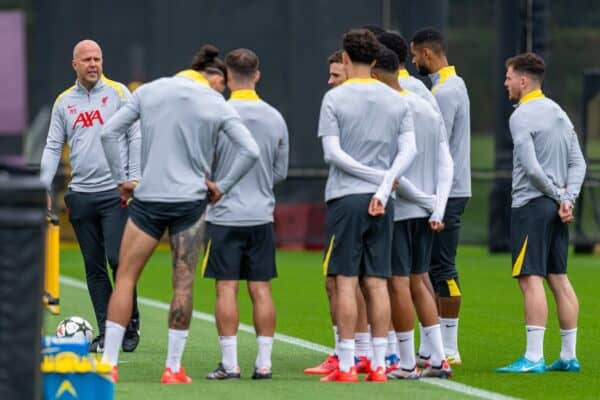
Liverpool Football Club kicked off their 2025/26 Premier League campaign in dramatic fashion, securing a hard-fought victory against Bournemouth that showcased both the promise and the challenges facing Arne Slot’s squad. While the Reds ultimately prevailed in a thrilling encounter that saw them surrender a two-goal advantage before rallying for a late victory through Federico Chiesa and Mohamed Salah, the match highlighted several pressing concerns that extend beyond the final scoreline.
The opening fixture served as both a statement of intent and a reality check for Liverpool’s ambitions this season. Under the guidance of their new manager, the team demonstrated the attacking prowess and resilience that fans have come to expect, yet defensive vulnerabilities and injury concerns have emerged as early talking points that could significantly impact the club’s trajectory in the weeks and months ahead.
Liverpool’s season opener against Bournemouth encapsulated the unpredictable nature of Premier League football. The Reds appeared to be cruising toward a comfortable victory after establishing a commanding two-goal lead, with their attacking unit clicking into gear and creating numerous opportunities. The fluid movement between the front three, combined with dynamic midfield play, suggested that Slot’s tactical approach was beginning to take shape effectively.
However, football rarely follows a predictable script, and Liverpool’s defensive frailties were exposed as the match progressed. A single misplaced pass – a momentary lapse in concentration that has become all too familiar for Liverpool supporters in recent seasons – presented Bournemouth with a golden opportunity that they seized with both hands. This defensive vulnerability, characterized by occasional lapses in positioning and communication, allowed the visitors to claw their way back into the contest when they should have been firmly out of it.
The resilience shown by Liverpool in the closing stages, with Chiesa and Salah combining to secure the three points, demonstrated the mental fortitude that championship-winning teams possess. Yet the manner of the victory also highlighted areas that require immediate attention if the club is to compete at the highest level throughout the campaign.
Arne Slot’s assessment that his team was “far too open at times defensively” provides insight into the work still required to implement his tactical vision fully. The Dutch manager, known for his meticulous approach to defensive organization during his time at Feyenoord, clearly recognizes that Liverpool’s defensive structure needs significant refinement.
The issues observed against Bournemouth weren’t merely individual errors but systemic problems that stem from players still adapting to new positional requirements and communication patterns. The transition from Jürgen Klopp’s high-intensity pressing system to Slot’s more structured approach requires time and patience, particularly in defensive phases where split-second decisions can determine the outcome of matches.
The positive news regarding Ryan Gravenberch’s availability for upcoming fixtures cannot be understated. The Dutch midfielder’s suspension for the opener, stemming from his red card against Crystal Palace on the final day of the previous season, deprived Liverpool of a crucial component in their midfield engine room. Gravenberch’s return should provide additional stability and control in the center of the park, potentially addressing some of the defensive concerns that were evident against Bournemouth.
Similarly, Joe Gomez’s return from injury adds depth and experience to Liverpool’s defensive options. The English defender’s versatility across multiple positions makes him an invaluable asset, particularly during a period when the squad is adapting to new tactical demands and dealing with various injury concerns
The continued absence of Conor Bradley represents one of Liverpool’s most significant early-season concerns. The Irish full-back, who has established himself as a reliable option in the right-back position, was initially expected to face a “race against time” to make the Community Shield appearance at Wembley. However, more than a week has passed since that assessment, and Bradley remains sidelined without a clear return date.
Bradley’s absence is particularly troubling given his importance to Liverpool’s defensive setup and his ability to contribute in attacking phases. The young defender had shown considerable promise in previous appearances, demonstrating the pace, crossing ability, and defensive awareness necessary to excel in the Premier League. His continued unavailability forces Slot to explore alternative options and disrupts the natural progression of team chemistry in a crucial position.
The uncertainty surrounding Bradley’s injury timeline also complicates squad planning and tactical preparation. Without a clear indication of when he might return, Liverpool must continue to rely on alternative solutions while hoping that his absence doesn’t extend into the crucial early fixtures that could set the tone for the entire campaign.
The decision to start Jeremie Frimpong against Bournemouth in Bradley’s absence initially appeared to be a astute tactical choice. The Dutch defender, known for his attacking contributions during his time at Bayer Leverkusen, seemed well-suited to Liverpool’s system and demonstrated competence against Bournemouth’s David Brooks in the early stages of the match.
Frimpong’s performance against Brooks, who poses a constant threat down the flanks with his pace and trickery, suggested that he could provide adequate cover while Bradley recovers. The Dutchman’s familiarity with high-intensity football and his ability to contribute in both defensive and attacking phases made him an appealing option for Slot’s tactical setup.
However, the second-half substitution that saw Frimpong withdrawn alongside Milos Kerkez raised immediate concerns about his physical condition. Slot’s post-match comments to Sky Sports, specifically his assertion that the substitution “wasn’t out of luxury,” clearly indicated that Frimpong had experienced discomfort that necessitated his removal from the action.
The hamstring concern that forced Frimpong’s early exit represents a significant worry for Liverpool’s squad depth and tactical flexibility. Hamstring injuries, while common in modern football, can be notoriously unpredictable in terms of recovery time and have a tendency to recur if not managed properly. The fact that Frimpong felt discomfort during his first competitive appearance for Liverpool raises questions about his immediate availability and the club’s options in the right-back position.
The concurrent concerns surrounding both Bradley and Frimpong create a domino effect that extends beyond the immediate right-back position. Liverpool’s squad planning and tactical preparation must now account for potential shortages in a crucial area of the pitch, particularly with challenging fixtures against Newcastle United and Arsenal looming before the end of August.
The upcoming trip to St. James’ Park to face Newcastle presents a stern test of Liverpool’s credentials and their ability to cope with adversity. Newcastle’s attacking threat, combined with the intense atmosphere of their home ground, will provide a comprehensive examination of Liverpool’s defensive resolve and tactical adaptability. The potential absence of both Bradley and Frimpong would leave Liverpool with limited options in a position that requires both defensive solidity and attacking contribution.
Similarly, the fixture against Arsenal represents another significant challenge that could influence Liverpool’s early-season momentum. The Gunners’ tactical sophistication and attacking quality will test every aspect of Liverpool’s defensive structure, making the availability of reliable full-back options even more crucial.
The week leading up to the Newcastle fixture takes on added significance as Liverpool’s medical and coaching staff work to assess the fitness levels of their injured players. The training sessions scheduled throughout the week will provide crucial information about Bradley’s recovery progress and Frimpong’s hamstring concern.
Modern football’s approach to injury management emphasizes careful monitoring and graduated return protocols, particularly for muscle injuries like the hamstring problem that affected Frimpong. The club’s medical team will likely implement a comprehensive assessment process that includes physical testing, movement analysis, and graduated exposure to match-intensity activities.
For Bradley, the extended absence suggests a more complex injury situation that requires patience and careful management. The lack of specific timeline information indicates that the medical staff is taking a cautious approach, prioritizing long-term health over short-term availability. This conservative strategy, while frustrating for fans and tactical planning, often proves beneficial in preventing more serious complications or recurring problems.
Slot’s tactical acumen will be tested as he explores alternative solutions to the right-back situation. The Dutch manager’s experience with squad rotation and tactical flexibility at Feyenoord suggests that he possesses the knowledge and creativity necessary to navigate these early challenges.
One potential solution involves repositioning existing squad members to cover the right-back role. Joe Gomez’s return from injury provides one such option, given his previous experience in the position and his understanding of Liverpool’s tactical requirements. Gomez’s pace, defensive awareness, and ability to contribute in attacking phases make him a viable alternative, although his deployment at right-back would require adjustments elsewhere in the defensive setup.
Another consideration involves promoting youth academy products who have demonstrated promise in the position. Liverpool’s academy has consistently produced talented defenders, and the current situation might provide an opportunity for emerging players to gain valuable first-team experience. However, such decisions must be balanced against the competitive demands of Premier League football and the potential impact on player development.
The upcoming fixture against Newcastle United represents more than just another Premier League match; it serves as an early indicator of Liverpool’s ability to cope with adversity and maintain competitive standards despite personnel challenges. Newcastle’s resurgence under Eddie Howe has established them as a formidable opponent, capable of troubling any team in the league.
St. James’ Park’s intimidating atmosphere, combined with Newcastle’s tactical discipline and attacking threat, will provide a comprehensive test of Liverpool’s defensive organization. The potential absence of both Bradley and Frimpong makes this challenge even more daunting, requiring tactical adjustments and potentially exposing inexperienced players to high-pressure situations.
Newcastle’s attacking approach, characterized by pace on the flanks and physical presence in central areas, will specifically target any weaknesses in Liverpool’s defensive setup. The right-back position, already identified as a concern, could become a focal point for Newcastle’s attacking strategy, making the fitness assessments of Bradley and Frimpong even more crucial.
The fixture against Arsenal carries significant implications for Liverpool’s early-season momentum and Premier League aspirations. Arsenal’s tactical sophistication under Mikel Arteta, combined with their impressive squad depth and quality, represents one of the sternest tests that any team will face throughout the campaign.
The Gunners’ ability to exploit tactical vulnerabilities and their clinical finishing in attacking phases will test every aspect of Liverpool’s defensive structure. The right-back position, potentially weakened by injury concerns, could become a target for Arsenal’s attacking movements, particularly given their tendency to overload wide areas and create numerical advantages.
The timing of this fixture, coming so early in the season, adds additional pressure to resolve the injury concerns quickly and effectively. A positive result against Arsenal would provide significant momentum for Liverpool’s campaign, while a disappointing performance could create early doubts about the team’s ability to compete with the league’s elite.
Liverpool’s medical department faces a challenging period as they work to resolve multiple injury concerns while maintaining the fitness levels of the broader squad. The different nature of Bradley’s prolonged absence and Frimpong’s acute hamstring concern requires diverse treatment approaches and recovery protocols.
The club’s investment in sports science and medical technology provides advantages in both diagnosis and treatment, but the unpredictable nature of injury recovery means that precise timelines remain difficult to establish. The medical team’s experience with similar injuries and their understanding of individual player physiology will be crucial in determining the most effective treatment approaches.
Communication between the medical department, coaching staff, and players becomes particularly important during this period. Clear information about recovery progress, realistic timelines, and potential risks helps inform tactical planning and ensures that players don’t return prematurely and risk more serious complications.
The current injury situation highlights the importance of squad depth and the challenges of maintaining competitive standards across multiple competitions. Liverpool’s ambitions in the Premier League, Champions League, and domestic cup competitions require a robust squad capable of handling the inevitable injury concerns that arise throughout a demanding campaign.
The club’s recruitment strategy and youth development programs take on added significance when key players are unavailable. The current challenges provide opportunities for fringe players to demonstrate their capabilities and potentially establish themselves as regular contributors to the first-team squad.
Long-term planning must also consider the lessons learned from the current situation. The concentration of injury concerns in the right-back position suggests that additional depth in this area might be necessary, whether through tactical flexibility, youth development, or potential future recruitment.
Liverpool’s opening to the 2025/26 season encapsulates the unpredictable nature of Premier League football and the constant challenges facing elite clubs. The victory against Bournemouth provided encouraging signs of attacking quality and mental resilience, while also highlighting defensive vulnerabilities and the impact of injury concerns on squad planning.
The situations surrounding Conor Bradley and Jeremie Frimpong represent the type of early-season challenges that can significantly influence a club’s trajectory. How Liverpool responds to these setbacks – tactically, medically, and psychologically – will provide insights into their potential for success throughout the campaign.
The upcoming fixtures against Newcastle and Arsenal will test Liverpool’s depth, tactical flexibility, and ability to maintain competitive standards despite personnel challenges. The week of training leading up to these matches takes on crucial importance as the coaching and medical staff work to assess player fitness levels and finalize tactical preparations.
Ultimately, Liverpool’s season will be defined not by the absence of challenges, but by their ability to overcome them. The early injury concerns, while frustrating, provide an opportunity for the squad to demonstrate resilience, depth, and tactical adaptability. Success in navigating these early obstacles could provide the foundation for a successful campaign, while failure to address them effectively could create long-lasting complications.
The coming weeks will reveal much about Liverpool’s capabilities under Arne Slot and their potential to compete at the highest level despite the inevitable setbacks that characterize elite football. The focus now turns to the training ground, where crucial decisions about playe fitness and tactical adjustments will shape Liverpool’s immediate future and potentially their entire season.

